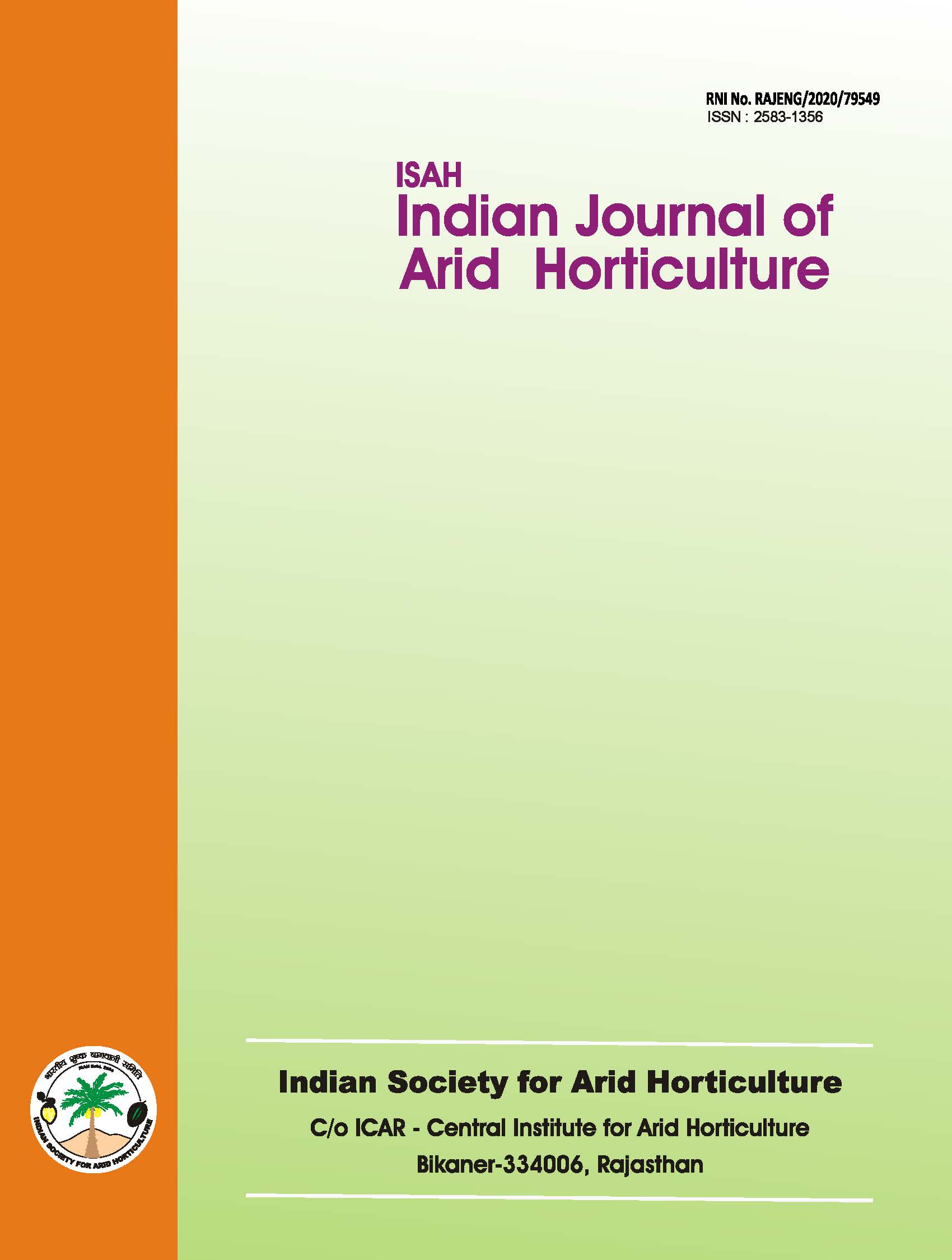Sustainable management of fruit fly infestation in guava for quality fruit production:A review
DOI:
https://doi.org/10.48165/ijah.2025.7.1.2Keywords:
Bactrocera correcta, fruit fly, guava, integrated pest management, sustainabilityAbstract
The guava is a tropical fruit that originated in Central and South America and has since been grown in many tropical and subtropical areas worldwide. In these regions, guava fruit fly, Bactrocera correcta, is a noteworthy pest of guava and other fruits. This particular species of fruit fly lays its eggs in ripening or ripe fruits of guavas, which may culminate in infestations which significantly damage crops. The female guava fruit fly normally releases the eggs within the fruit as part of the life cycle. After hatching, the larvae feed the fruit pulp, which makes it rot and unfit for human eating. In cases of severe infestation, this not only diminishes the fruit’s yield and quality but also makes it unmarketable. Controlling the guava fruit fly often involves a combination of cultural, mechanical, biological, and chemical methods. These can include techniques such as fruit bagging, sanitation, trapping, para-pheromone lure, bait spray, biocontrol, bio-pesticide and the application of insecticides. Fruit fly populations can be effectively managed by using fewer chemical pesticides and implementing integrated pest management (IPM) techniques. Maintaining the productivity and quality of guava crops, as well as other susceptible fruits in affected areas requires efforts to control the guava fruit fly.
Downloads
References
Abbas, M., Hussain, D., Saleem, M., Ghaffar, A., Abbas, S., Hussain, N., & Ghaffar, A. (2021). Integrated pest management of guava, citrus and mango fruit flies at three districts of Punjab. Pakistan Journal of Zoology, 53(3), 1–9.
Abbasi, N. A., Chaudhary, M. A., Ali, M. I., Hussain, A., & Ali, I. (2014). On tree fruit bagging influences the quality of guava harvested at different maturity stages during summer. International Journal of Agriculture and Biology, 16, 543–549.
Afzal, M., & Javed, H. (2001). Evaluation of soaked wooden killer blocks for male annihilation (MA) on fruit fly Bactrocera spp. (Diptera: Tephritidae). Journal of Biological Sciences, 1(7), 577–579.
Agarwal, M. L., Sharma, D. D., & Rahman, O. (1987). Melon fruit fly and its control. Indian Horticulture, 32, 10–11.
Arora, P. K., Batra, R. C., Mehrotra, N. K., & Thind, S. K. (1998). Screening of some promising guava varieties against fruit fly. In Proceedings of the First National Symposium on Pest Management in Horticultural Crops: Environmental Implication and Thrusts (pp. 43–44). Bangalore.
Balasubramaniam, G., Abraham, E. V., Vijayaraghavan, S., Subramaniam, T. R., Santhanaraman, T., & Gunasekaran, C. R. (1972). Use of male annihilation technique in the control of the oriental fruit fly, Dacus dorsalis Hendel. Indian Journal of Agricultural Research, 42, 975–977.
Billah, M. K., Wilson, D. D., Cobblah, M. A., Lux, S. A., & Tumfo, J. A. (2006). Detection and preliminary survey of the new invasive fruit fly species Bactrocera invadens (Diptera: Tephritidae) in Ghana. Journal of the Ghana Science Association, 8(2), 139–149.
Cai, P., Peng, Y., Song, Y., Lin, J., Nie, C., Li, Y., Ma, C., & Ji, Q. (2022). Is Fopius arisanus (Hymenoptera: Braconidae) a suitable biological control agent of Bactrocera dorsalis (Diptera: Tephritidae) in multi-crop orchards? International Journal of Pest Management, 70(4), 1–9. https://doi.org/10.1080/09670874.2022.2151055
Chandana, M. R., Menaka, M., Singh, S. K., Goswami, A. K., & Sree, M. R. (2023). Eco-friendly management of fruit fly for quality guava production. Indian Horticulture, 68(1), 43–46.
Christenson, L. D., & Foote, R. H. (1960). Biology of fruit flies. Annual Review of Entomology, 5(1), 171–192.

